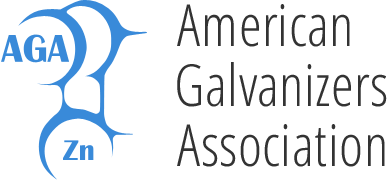Menu • Quick Links • Search
Login
CloseIn Canada, non-redirective crash cushions play a vital role in roadside safety, particularly on high-speed highways and urban roadways. These systems are installed to protect drivers from fixed hazards in situations where redirecting vehicles away from impact points is impractical, such as around toll plazas, bridge abutments, and exit ramps. Provincial transportation agencies and the Ministry of Transportation assess high-risk areas, ensuring that crash cushions meet stringent standards set by the Canadian Standards Association (CSA) to provide reliable energy absorption and reduce collision impact forces.
The success of this crash cushion, with its enhanced durability and longevity due to hot-dip galvanizing, highlights the crucial role galvanizing plays in demanding infrastructure applications.
One innovative non-redirective crash cushion solution on the market is designed as a MASH-compliant, impact attenuator that excels in absorbing and dissipating collision energy. It is the first of its kind engineered to protect both movable and portable temporary barriers, adding versatility to its application across various safety needs. With an overall length of 24 feet and substantial volume when filled, this crash cushion offers unmatched protection in demanding road environments.
Crash cushions used in Canada face challenges unique to the harsh climate, including extreme cold, snow, ice, and high exposure to road salt. Ensuring durability under these conditions requires advanced materials and thoughtful design. Compliance with Canadian safety standards often necessitates the use of steel and engineered plastics capable of withstanding corrosion and compressing upon impact to reduce injury. To meet these requirements and increase longevity, this crash cushion incorporates hot-dip galvanizing.
The galvanizing process immerses each cushion component in molten zinc, creating a durable, bonded coating that resists corrosion. This protective layer shields against harsh environmental conditions, a critical factor in Canada, where extreme winters and salt exposure are constant threats to material integrity. The zinc coating not only provides robust corrosion resistance but also significantly reduces maintenance needs, making this cushion an ideal, low-maintenance solution for high-risk, hard-to-reach areas such as sharp curves, toll plazas, and urban medians. By extending the product’s lifespan, galvanizing minimizes long-term replacement and upkeep costs, providing a cost-effective solution for transportation agencies focused on durability and safety.
This galvanized crash cushion aligns with Canada’s Vision Zero initiatives, designed to reduce accident severity, lower injury rates, and enhance protection for both motorists and infrastructure. In challenging climates, hot-dip galvanizing offers durable, long-term protection, allowing transportation agencies to confidently deploy these non-redirective crash cushions in high-risk areas. The result is a more resilient and sustainable safety solution that supports Canada’s ambitious road safety goals, providing reliable, easy-to-install protection in even the most extreme conditions.
The success of this crash cushion, with its enhanced durability and longevity due to hot-dip galvanizing, highlights the crucial role galvanizing plays in demanding infrastructure applications. As this product continues to prove its resilience and value, it sets a new standard for high-performance, corrosion-resistant solutions, potentially driving increased demand for hot-dip galvanizing across the road safety and infrastructure sectors.
Details
Award Class
Newly Complete
Award Sectors
Original Equipment Manufacturing
Environment
Industrial/Urban
Location
Montreal, QC Canada
Reasons for Galvanizing
Coating Durability, Corrosion Performance, Ease of Specifying, Life-Cycle Cost, Quality of HDG, Sustainability
Components Galvanized
Steel nose cone, hinges, lifting points
Tonnage/Size
Steel: 1
HDG: 1
Team Members
Fabricator
Matritech Inc.
Member Galvanizer(s)
AZZ Galvanizing - Montreal
Thank you! Your vote has been accepted.





